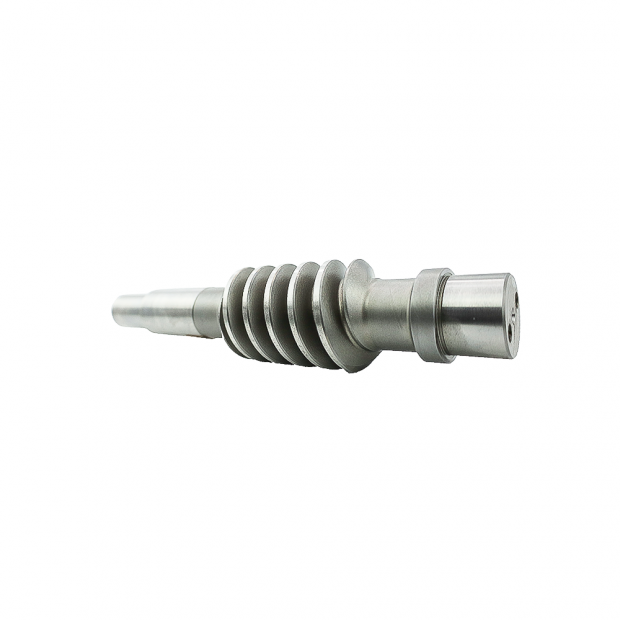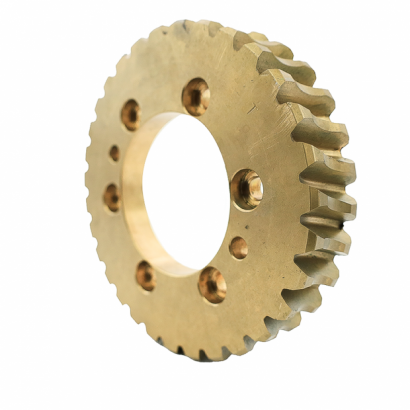Components:
- Worm: A helical gear, resembling a screw, which meshes with the teeth of the worm gear. The worm typically drives the worm gear, and its rotation causes the worm gear to turn.
- Worm Gear: A gear with teeth cut at an angle, designed to mesh with the worm. It is driven by the worm and converts rotational movement into motion at a right angle.
Key Characteristics:
- High Reduction Ratios: Worm drives can achieve significant speed reduction in a compact space. For example, if a worm has 1 thread (start) and the worm gear has 50 teeth, the gear ratio will be 50:1.
- Self-Locking: In some configurations, the worm gear cannot drive the worm, which can be useful for safety and braking mechanisms.
- Smooth and Quiet Operation: Due to the sliding contact between the worm and worm gear, the operation is generally smoother and quieter compared to other gear types.
Applications:
- Elevators and Lifts: To manage the heavy loads with precise control.
- Conveyor Systems: For handling materials with high torque requirements.
- Automotive Steering Mechanisms: To provide smooth and controlled steering.
- Tuning Instruments: Such as in guitar tuning pegs for precise adjustments.
- Industrial Machinery: Where precise and controlled motion is necessary.
Advantages:
- Compact Design: Achieves high reduction ratios in a small footprint.
- High Torque Output: Capable of transmitting significant torque.
- Self-Locking Capability: Prevents back-driving in many applications.
Disadvantages:
- Efficiency Loss: Due to the sliding contact, there can be higher friction and energy loss compared to other gear systems.
- Heat Generation: Friction can cause heat buildup, requiring proper lubrication and cooling.
In summary, worm and worm gear systems are essential in applications requiring high torque and compact design, despite their inherent efficiency trade-offs.








